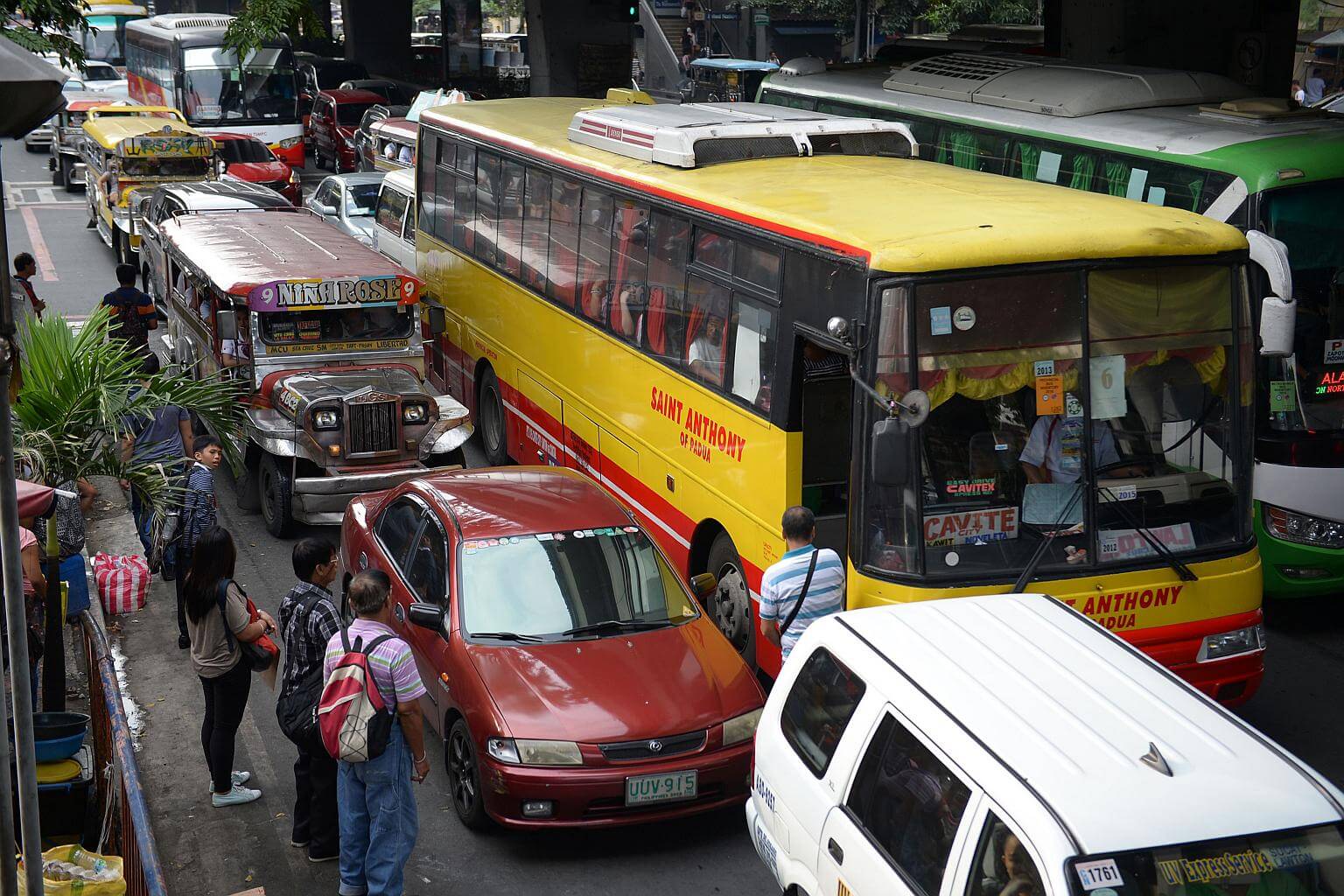Filipinos spend 16 days a year stuck in traffic: Study
Sign up now: Get insights on Asia's fast-moving developments

Commuters waiting for their ride along a main road in Manila.
PHOTO: AFP
Follow topic:
MANILA - Filipinos in Manila spend an hour and six minutes each day - or 16 days a year - stuck in traffic, costing them about 100,000 pesos (S$2,663) a year in lost income opportunities.
And that's not including another 24 minutes a day that they spend looking for parking.
A new study by the Boston Consulting Group (BCG) for ride-hailing service Uber Philippines showed Manila had the third-longest traffic wait time in Asia, after Bangkok and Jakarta.
By comparison, commuters and motorists in Singapore spend about 30 minutes in traffic and 19 minutes looking for a parking slot.
About three in four Filipinos have missed or been late to an event because they could not park their cars quickly enough, the study said. The most commonly missed events are doctors' appointments, job interviews and weddings.
In a year, Filipinos will spend a little over 16 days stuck in traffic. That translates to 100,000 pesos in lost productivity each year.
"Road congestion costs Asian economies an estimated 2 to 5 per cent of gross domestic product each year due to lost time and higher transport costs," said Mr Laurence Cua, general manager, Uber Philippines, citing an Asian Development Bank report.
-
Average time spent every day in traffic congestion
1. Bangkok: 72 minutes
2. Jakarta: 68 minutes
3. Manila: 66 minutes
4. Hanoi: 58 minutes
5. Kuala Lumpur: 53 minutes
6. Ho Chi Minh: 51 minutes
7. Hong Kong: 35 minutes
8. Singapore: 30 minutes
2. Jakarta: 68 minutes
3. Manila: 66 minutes
4. Hanoi: 58 minutes
5. Kuala Lumpur: 53 minutes
6. Ho Chi Minh: 51 minutes
7. Hong Kong: 35 minutes
8. Singapore: 30 minutes
-
Average time spent every day looking for parking
1. Hanoi: 45 minutes
2. Ho Chi Minh: 31 minutes
3. Hong Kong, Kuala Lumpur: 25 mintues
5. Bangkok, Manila: 24 minutes
7. Jakarta, Taipei : 21 minutes
9. Singapore: 19 minutes
2. Ho Chi Minh: 31 minutes
3. Hong Kong, Kuala Lumpur: 25 mintues
5. Bangkok, Manila: 24 minutes
7. Jakarta, Taipei : 21 minutes
9. Singapore: 19 minutes
During rush hour in metropolitan Manila, the number of vehicles far exceed the roads' maximum capacity, totalling 1.75 times what the roads can handle. It takes 2.3 times longer to travel during this time.
Traffic congestion is likely to get worse, as low-downpayment promotions by banks and carmakers fuel an explosion in car ownership.
In 2015, the total number of motor vehicles in metropolitan Manila hit 2.5 million, with that number likely to keep growing. Car sales hit an all-time high of 417,356 in 2016.
The public transport infrastructure, meanwhile, is creaking.
The BCG study found that demand for rail transport in Manila, Singapore, Hong Kong, Taipei, Kuala Lumpur and Bangkok is forecast to grow from below 20,000 people per km in 1980 to about 100,000 in 2020.
Supply, meanwhile, is expected to only reach 80,000, resulting in a shortfall of 20,000 people per km. This gap between demand and supply has led to congestion.
On Manila's six railway lines, with 246km of route lengths in total, peak hour congestion is already at 132 per cent.
The BCG study said the Philippine government would need at least US$51 billion (S$68.7 billion) worth of additional roads, tollways, rail lines and subways just to keep up with demand for more public transportation.
Alternatively, it can turn to more economic alternatives such as ride-sharing and car-pooling services.
"The more people use shared modes, the more likely they are to use public transit, own fewer cars and spend less on transportation overall," said Mr Cua.
He said ride-sharing can remove as many as 1 million private vehicles off the road, translating into a 50 to 90 per cent reduction in congestion.

